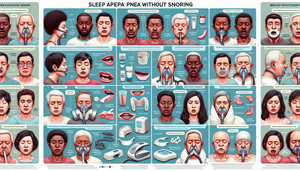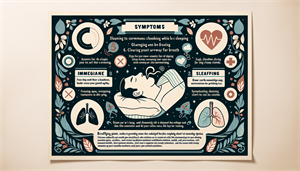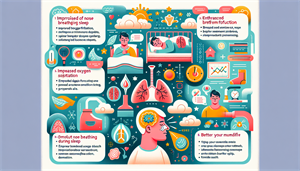
Can You Have Sleep Apnea Without Snoring?
Did you know that sleep apnea, a serious sleep disorder, can occur without the presence of loud snoring? In fact, many people wonder, “can you have sleep apnea without snoring?” Recognizing the silent signs of sleep apnea is crucial for proper diagnosis and treatment, as it can lead to severe health complications if left untreated. Let’s dive into the world of sleep apnea without snoring and learn how to identify and manage this condition effectively.
Key Takeaways
Sleep apnea is a complex disorder with various forms and symptoms, including snoring or silence. Although less common, it is possible to have sleep apnea without snoring. Friends and family can provide understanding, encouragement, and support to those living with sleep apnea.
Sleep Apnea: Beyond the Noise
Sleep apnea is a prevalent sleep disorder characterized by episodes of cessation of breathing during sleep, affecting approximately 39 million American and 858,900 Canadian adults. Although loud snoring is a common symptom of sleep apnea, it is possible for an individual to have sleep apnea without snoring. Comprehending the various forms of sleep apnea can aid in accurate diagnosis and treatment, as untreated conditions may result in a variety of health complications.
Obstructive Sleep Apnea
Obstructive sleep apnea is the most common type of sleep apnea snoring, affecting a large number of individuals. It occurs when the throat muscles relax during sleep, causing a blocked airway and resulting in loud snoring as a common symptom. Risk factors associated with obstructive sleep apnea include: Obesity, Smoking, Alcohol consumption, and Family history. Surgery is often the best choice for treating severely shut airways. It can provide long-term relief from breathing problems. However, less invasive approaches, such as control breathing, adjusting sleep position, or using continuous positive airway pressure (CPAP) therapy, can also help alleviate some symptoms of sleep apnea.
Central Sleep Apnea
Central sleep apnea, on the other hand, is a less common type of sleep apnea that occurs when the brain fails to send proper signals to the muscles controlling breathing during sleep. This results in episodes of stopped breathing, often without the presence of snoring. Risk factors associated with central sleep apnea include heart failure, stroke, and brain tumors. The distinction between central sleep apnea and obstructive sleep apnea lies in the cause of the breathing pauses. While obstructive sleep apnea is caused by the collapse of throat muscles, central sleep apnea occurs due to the brain’s inability to transmit the correct signals to the muscles that control respiration.
Complex Sleep Apnea
Complex sleep apnea is a combination of both obstructive and central sleep apnea, making it a more challenging condition to diagnose and treat. This type of sleep apnea can be caused by a combination of factors, such as the interaction of upper airway obstruction and unstable central ventilatory control or when someone previously diagnosed with obstructive sleep apnea develops central sleep apnea due to CPAP treatment. To diagnose sleep apnea, particularly complex sleep apnea, a diagnostic sleep study known as a polysomnogram is used. This study assesses the number of obstructive events, including obstructive apneas, mixed apneas, hypopneas, and respiratory-related arousals, that occur per hour of sleep. Indications of complex sleep apnea may include episodes of not breathing during sleep, sudden awakenings with shortness of breath, excessive daytime sleepiness, and


